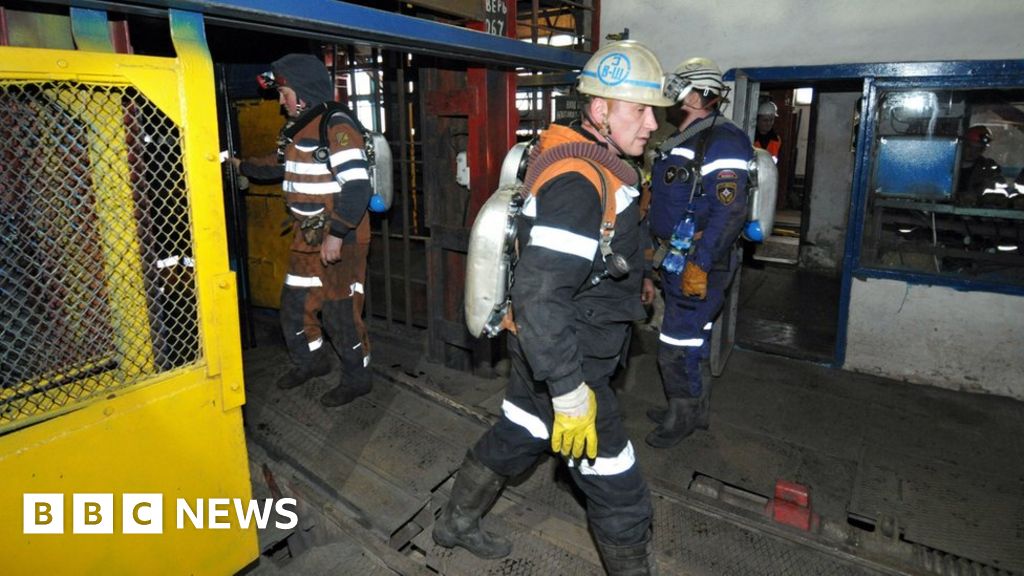When you hear the phrase "Russia lathe accident," it often brings to mind stories of industrial mishaps that have captured global attention. The world of machining can be both fascinating and dangerous if safety protocols aren’t followed. These accidents highlight the importance of proper training, equipment maintenance, and adherence to safety guidelines. But what exactly happens in these incidents, and why do they occur? Let's dive in and uncover the truth behind these events.
Picture this: a worker steps up to a lathe machine, ready to shape metal into precision parts. The hum of the machine fills the air, and everything seems routine—until something goes terribly wrong. Russia has seen its fair share of lathe accidents, some of which have been tragic reminders of the risks involved in metalworking. These stories aren’t just cautionary tales; they’re opportunities to learn and improve.
Whether you're an experienced machinist or someone curious about industrial safety, understanding the causes and consequences of these accidents is crucial. In this article, we'll explore the factors that contribute to lathe accidents, real-life examples from Russia, and how to prevent them. So buckle up, because we’re about to take a deep dive into the world of machining safety.
Read also:Anna Enger The Rising Star Among Ritch Kids In The Spotlight
Before we get started, here’s a quick guide to help you navigate this article:
- Biography: Understanding the Lathe Machine
- Common Causes of Russia Lathe Accidents
- Real-Life Accidents in Russia
- Safety Tips to Prevent Accidents
- The Importance of Training
- Why Maintenance Matters
- Statistical Insights on Lathe Accidents
- Preventive Measures for the Future
- A Global Perspective on Machining Safety
- Conclusion: Lessons Learned
Biography: Understanding the Lathe Machine
Before we talk about accidents, let’s take a step back and understand what a lathe machine actually is. A lathe is a tool used to shape materials like wood, metal, or plastic by rotating them on an axis while applying cutting tools. Think of it as a high-tech version of a potter’s wheel, but instead of clay, you’re working with materials that require precision and strength.
In Russia, lathes are widely used in manufacturing and engineering industries. They’re essential for creating everything from car parts to aerospace components. But like any powerful tool, they come with risks if not handled correctly. So, what makes these machines so dangerous? Well, it’s all about speed, force, and human error.
Key Features of a Lathe Machine
Here’s a quick breakdown of what makes a lathe machine tick:
- Spindle: The part that rotates the material.
- Tool Rest: A platform where cutting tools are placed.
- Carriage: Moves the cutting tool along the material.
- Chuck: Holds the material securely in place.
These components work together to create precise cuts, but any malfunction or misuse can lead to disaster. That’s why understanding the machine is the first step in preventing accidents.
Common Causes of Russia Lathe Accidents
So, what exactly causes these accidents? It’s not always one thing—it’s usually a combination of factors. Let’s break it down:
Read also:Royal Baby Number 4 Announcement The Buzz Around The Bbc
Human Error
One of the biggest culprits is human error. Whether it’s a lack of training, fatigue, or simply not paying attention, mistakes happen. Workers might forget to secure the material properly, use the wrong tool, or even try to operate the machine without turning it off first. These small oversights can lead to big problems.
Machinery Malfunctions
Another common cause is machinery malfunctions. Lathes are complex machines with many moving parts, and if something goes wrong, it can be catastrophic. For example, a worn-out spindle or a loose chuck can cause the material to fly off, potentially injuring anyone nearby.
Real-Life Accidents in Russia
Now, let’s look at some real-life examples of lathe accidents in Russia. These stories are not just shocking—they’re also eye-opening.
Case Study 1: The Factory Mishap
In 2018, a worker at a factory in Siberia suffered severe injuries after a piece of metal broke loose during a lathe operation. The incident was attributed to a lack of proper maintenance on the machine. The worker’s hand was caught in the spinning chuck, resulting in multiple fractures and requiring extensive surgery.
Case Study 2: The Fatal Incident
Another tragic case occurred in 2020 when a machinist in Moscow died after being pulled into a lathe machine. The investigation revealed that the worker had bypassed safety protocols to speed up production, leading to a fatal mistake. This case underscores the importance of following safety guidelines, no matter how experienced you are.
Safety Tips to Prevent Accidents
Prevention is key when it comes to lathe accidents. Here are some safety tips to keep in mind:
- Always wear appropriate personal protective equipment (PPE), including gloves, goggles, and hearing protection.
- Ensure the material is securely clamped before starting the machine.
- Inspect the lathe for any signs of wear or damage before use.
- Never attempt to adjust the machine while it’s running.
- Follow all safety protocols and guidelines provided by the manufacturer.
These may seem like basic rules, but they can make all the difference in preventing accidents.
The Importance of Training
Training is another critical factor in reducing lathe accidents. Proper training ensures that workers understand how to operate the machine safely and recognize potential hazards. In Russia, many factories are now investing in comprehensive training programs to improve safety standards.
What Makes Good Training?
Good training programs include:
- Hands-on practice with experienced instructors.
- Regular refresher courses to update skills and knowledge.
- Simulations of real-world scenarios to prepare workers for emergencies.
By prioritizing training, companies can significantly reduce the risk of accidents.
Why Maintenance Matters
Maintenance is another crucial aspect of lathe safety. Regular inspections and maintenance can identify potential issues before they become serious problems. In Russia, many factories are adopting preventive maintenance schedules to ensure their machines are always in top condition.
What Should Be Checked?
During maintenance checks, technicians should inspect:
- The spindle for wear and tear.
- The chuck for proper alignment and security.
- All electrical components for signs of damage or malfunction.
By staying on top of maintenance, companies can prevent accidents and extend the lifespan of their machines.
Statistical Insights on Lathe Accidents
Numbers don’t lie, and when it comes to lathe accidents, the statistics are sobering. According to a report by the International Labour Organization (ILO), machining accidents account for a significant percentage of workplace injuries globally. In Russia, the numbers are particularly concerning:
- Approximately 20% of all industrial accidents involve lathes or similar machinery.
- Over 50% of these accidents are attributed to human error.
- Only 30% of factories in Russia have comprehensive safety training programs in place.
These numbers highlight the urgent need for better safety measures and training in the industry.
Preventive Measures for the Future
Looking ahead, there are several steps that can be taken to reduce lathe accidents in Russia and around the world:
Technology Integration
Advancements in technology can play a major role in improving safety. For example, smart sensors can monitor machine performance and alert operators to potential issues in real time. This can help prevent accidents before they happen.
Policy Changes
Government regulations and industry standards can also make a difference. By mandating regular maintenance and training, authorities can ensure that factories are held accountable for safety.
A Global Perspective on Machining Safety
While this article focuses on Russia, lathe accidents are a global issue. Countries like the United States, Germany, and China are also taking steps to improve machining safety. By sharing best practices and learning from each other, the global manufacturing community can work together to create safer workplaces for everyone.
Conclusion: Lessons Learned
As we wrap up this article, it’s clear that lathe accidents in Russia—and around the world—are a serious issue that demands attention. By understanding the causes, implementing safety measures, and prioritizing training and maintenance, we can significantly reduce the risk of these incidents.
So, what can you do? If you’re a worker, make sure you’re following all safety protocols and never hesitate to report potential hazards. If you’re a manager or business owner, invest in training programs and regular maintenance to protect your employees and your equipment.
And remember, every accident is preventable. By working together, we can create a safer future for everyone in the machining industry. So, what are you waiting for? Share this article, leave a comment, and let’s keep the conversation going!



